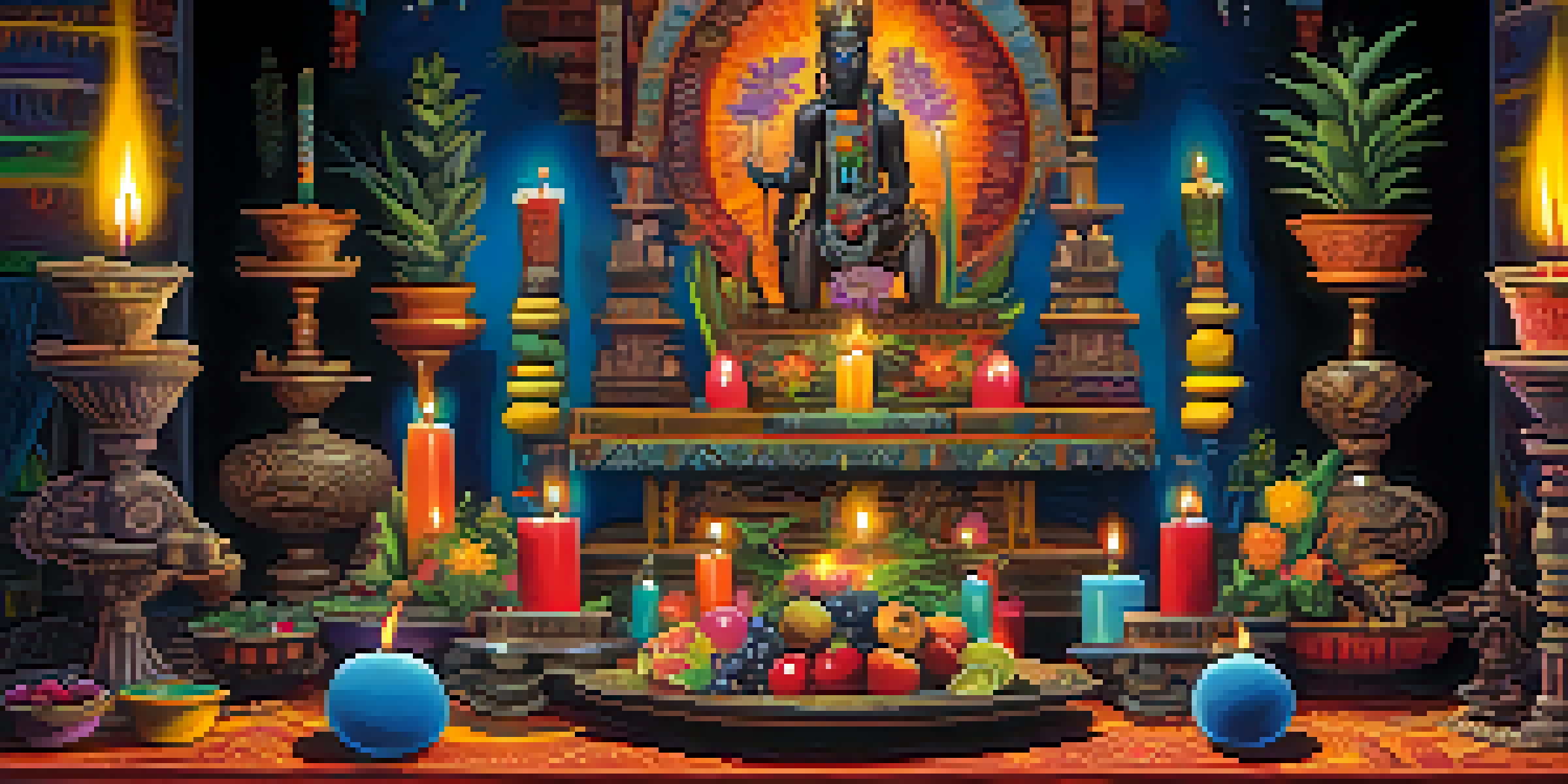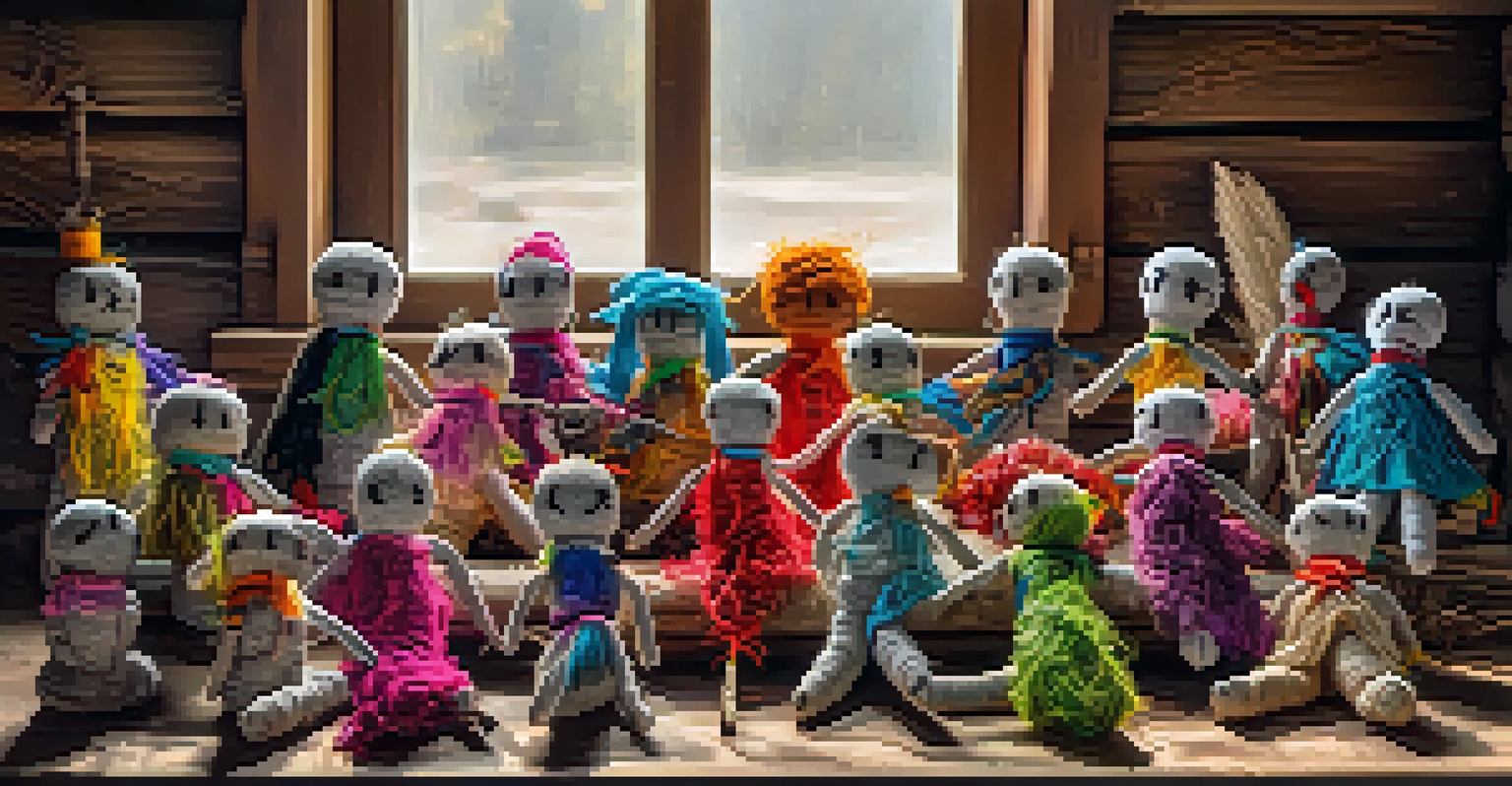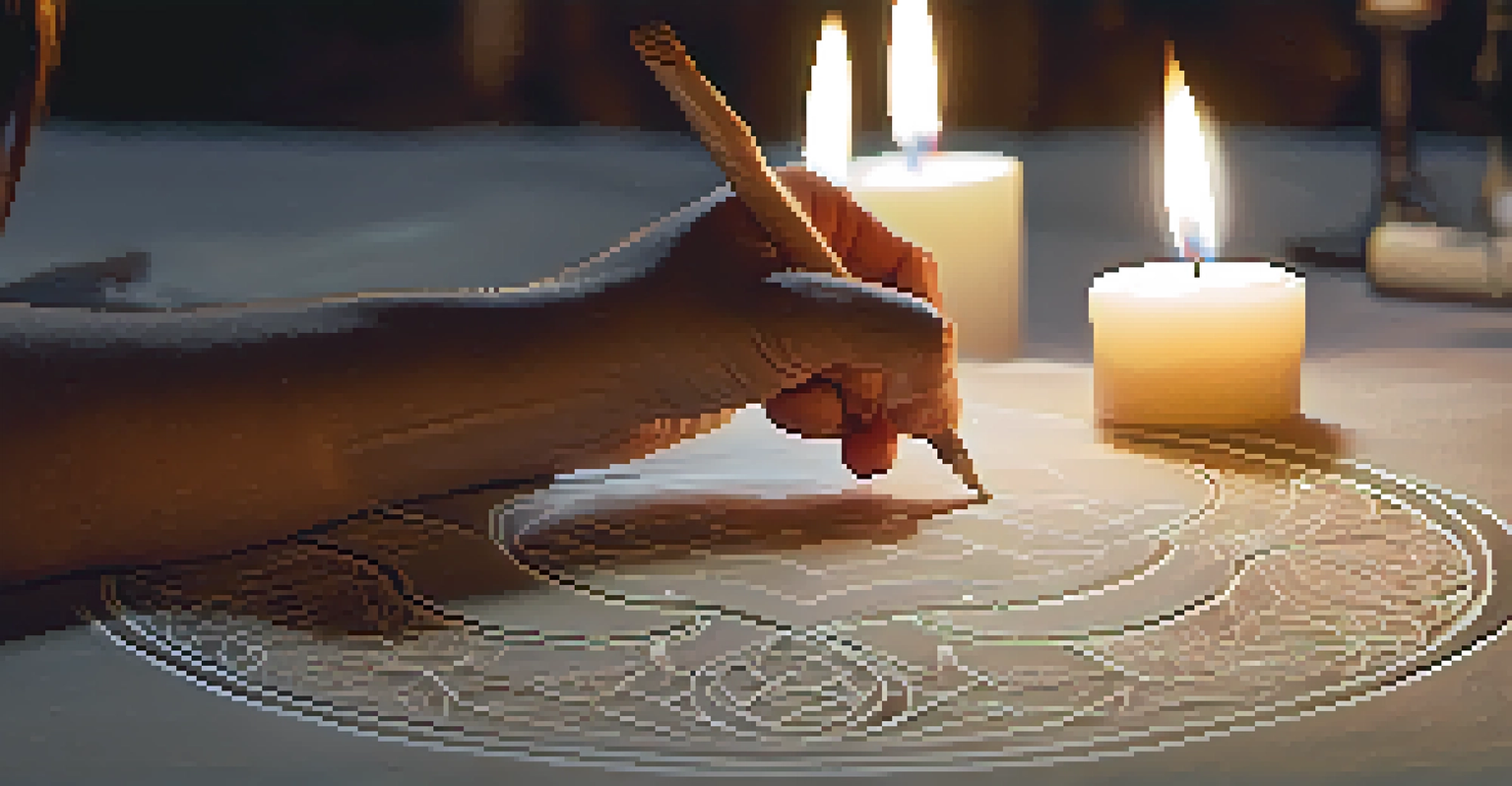Symbols and Tools: The Artifacts of Voodoo Spirituality

Understanding Voodoo Spirituality and Its Artifacts
Voodoo spirituality, often misunderstood, is rich in symbolism and tradition. It blends African, Caribbean, and European elements, creating a unique spiritual practice. At the heart of Voodoo are its artifacts, each serving a specific purpose in rituals and ceremonies.
Voodoo is a religion that teaches us to trust in our own power and to respect our connection to the spirit world.
These artifacts can be anything from altars and dolls to specific symbols that represent spirits or deities. Understanding these items is crucial to grasping the essence of Voodoo. They are not mere objects but powerful tools that connect practitioners with the spiritual realm.
In essence, artifacts in Voodoo serve as bridges between the physical and spiritual worlds. By using these tools, practitioners seek guidance, protection, and healing from their spirits, making them integral to the practice.
The Role of Symbols in Voodoo Practices
Symbols play a vital role in Voodoo, acting as visual representations of complex ideas and spiritual beliefs. Each symbol, known as a 'veve,' is carefully drawn during rituals to invite specific spirits, known as 'Loa,' to participate. These intricate designs are not just artistic; they hold deep spiritual significance.

For example, the veve of Papa Legba, the guardian of the crossroads, often features a cross and a key, symbolizing access to spiritual realms. When drawn with intention, these symbols create a sacred space, inviting Loa to communicate and assist practitioners.
Artifacts Connect to Spiritual Realm
Voodoo artifacts serve as powerful tools that bridge the physical and spiritual worlds, facilitating guidance and healing.
Understanding these symbols requires knowledge of their meanings and the stories behind them. This connection to history enhances the practitioner’s experience, allowing for a deeper interaction with the spiritual forces at play.
Dolls: More Than Just Playthings in Voodoo
Voodoo dolls are perhaps the most famous artifacts associated with Voodoo spirituality, but they are often misunderstood. Many people think of them as tools for curses or hexes, but in reality, they are used for healing, protection, and connection. Each doll represents an individual, and practitioners use them to channel their intentions and desires.
The spirits are always there, and they are always willing to help us if we honor them and acknowledge their presence.
In Voodoo practice, a doll can be adorned with personal items or symbols that relate to the person it represents. This personal connection helps the practitioner focus their energy and intentions, whether for healing or guidance. It’s a way to manifest change in a tangible form.
Thus, Voodoo dolls serve as a medium through which practitioners can connect with the spiritual world. When approached with respect and understanding, these artifacts become powerful tools for positive transformation.
Altars: The Heart of Voodoo Practice
Altars are central to Voodoo spirituality, acting as sacred spaces for rituals and offerings. These personalized shrines are often adorned with symbols, photographs, and items that honor the Loa and ancestors. Each altar reflects the practitioner's beliefs, intentions, and the spirits they wish to connect with.
Practitioners use altars to communicate with the spiritual world, offering items like food, drink, or flowers. These offerings are not just gifts; they are expressions of gratitude and requests for guidance or assistance. The act of creating and maintaining an altar is a form of devotion that deepens the practitioner’s spiritual journey.
Symbols Invite Spiritual Participation
The intricate symbols, or 'veves,' drawn during Voodoo rituals invite specific spirits to engage with practitioners, enhancing their spiritual experience.
In essence, altars provide a focal point for Voodoo rituals, helping practitioners center their energy and intentions. They symbolize the connection between the physical and spiritual realms, making them vital to Voodoo practice.
The Significance of Ritual Tools in Voodoo
Ritual tools in Voodoo are essential for conducting ceremonies and invoking spirits. These tools can include items like drums, candles, and ritual knives, each serving its purpose in the spiritual practice. For instance, drums are used to create rhythms that invite spirits to join the celebration and enhance the energy of the ritual.
Candles, often colored to represent specific intentions, can be burned to symbolize prayers or desires. Different colors hold various meanings, such as red for love or green for prosperity. By using these tools thoughtfully, practitioners can amplify their intentions and create a conducive environment for spiritual work.
Ultimately, ritual tools are not just objects but extensions of the practitioner's will and desires. They help to manifest intentions and facilitate communication with the spiritual realm, making them indispensable in Voodoo rituals.
Ancestral Connection: The Power of Ancestor Altars
In Voodoo, honoring ancestors is a sacred practice that fosters a deep connection with one’s heritage. Ancestor altars serve as special spaces dedicated to remembering and honoring those who have passed. These altars are adorned with photographs, personal items, and offerings, creating a respectful tribute to family lineage.
The act of maintaining an ancestor altar allows practitioners to cultivate a relationship with their forebears, seeking guidance and wisdom from those who came before. By acknowledging their ancestors, practitioners honor their history and strengthen their spiritual foundation.
Altars Honor Ancestors and Spirits
Altars in Voodoo act as sacred spaces for honoring ancestors and spirits, reflecting personal beliefs and intentions while fostering deeper spiritual connections.
This connection not only enriches individual practices but also reinforces the importance of community and shared history within Voodoo spirituality. It emphasizes the belief that the spirits of ancestors continue to play a vital role in the lives of the living.
Cleansing and Protection Tools in Voodoo
Cleansing and protection are essential aspects of Voodoo practice, with various tools designed to safeguard practitioners and their spaces. Common items include herbs, salts, and specific symbols that are believed to ward off negative energy or unwanted spirits. For example, sage and rosemary are often burned for their purifying properties.
Practitioners may also use protective amulets or talismans, which are imbued with specific intentions to shield against harm. These artifacts serve as reminders of the practitioner’s power and the protective energies available to them. Wearing or carrying these items can instill a sense of security and confidence.

By incorporating cleansing and protection tools into their practices, Voodoo practitioners create a safe and supportive environment for spiritual work. These tools help to maintain balance and harmony, allowing for a more profound connection to the spiritual world.